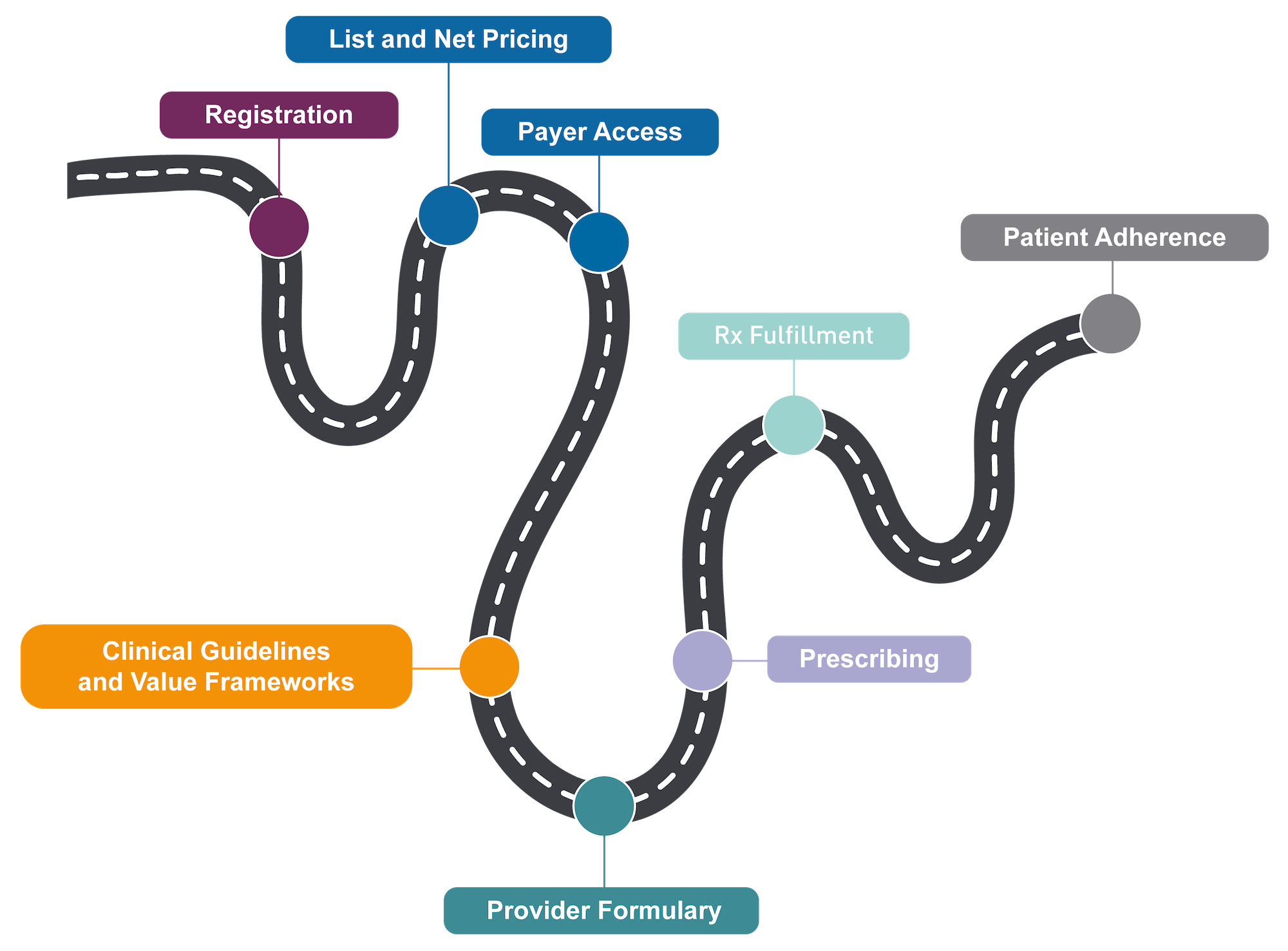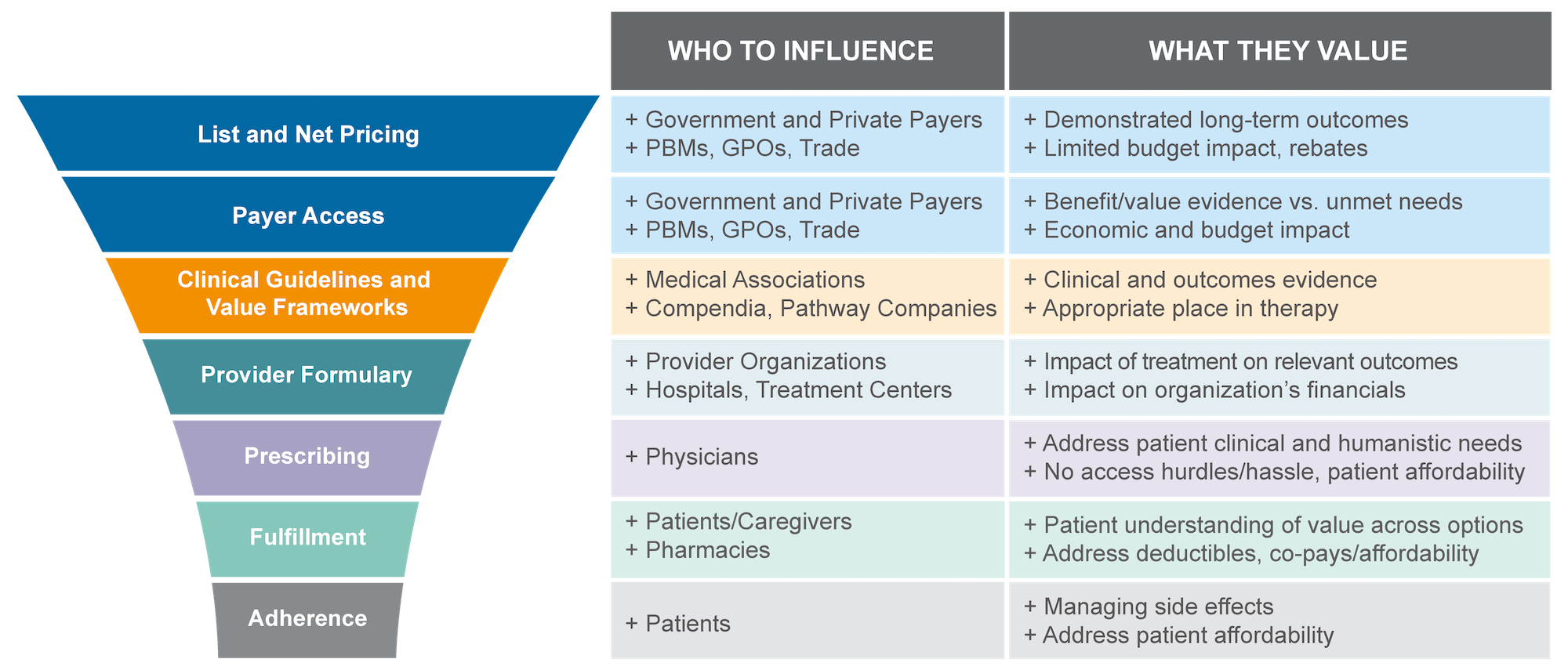Going Beyond Lip Service on Value
Providing evidence for a strong value proposition to each of the access journey decision makers needs to be weighed against the risk of clinical trial failure, cost of investment, and launch timing. Ed Schoonveld outlines how a pharma company can analyze and rejuvenate its decision process.
Many pharma companies continue to put the highest priority on gaining rapid market authorization from the FDA while largely de-emphasizing the need to provide evidence of a product’s value to payers, providers, prescribing physicians and patients. The prescription drug environment has evolved substantially over the last five years or so. Additional severe fiscal challenges, as an aftermath of the COVID-19 pandemic, will further tighten payer budgets and intensify the industry’s focus on value and affordability, resulting in tougher access negotiations. The evidence packages coming out of some companies’ pipelines don’t align with the evolved market needs. Without a better alignment with customer value perspectives and patient needs, and incorporation in to realistic forecasts, pharma’s drugs will continue to disappoint its investors.1 There are a few ways that pharma companies can make better development decisions that improve value claims and supporting evidence, and hence drive patient access and commercial success.
Success in today’s prescription drug market requires endorsement of a drug’s value proposition by many “access journey”2 stakeholders, each of whom has an impact on the utilization and commercial viability of a new drug. Failing to deliver on this need likely will result in missed revenue projections as payers block access, providers don’t adopt the new treatment listed on the formulary, medical experts don’t advocate its use in treatment guidelines, physicians don’t prescribe the drug, and patients balk at their co-payment at the pharmacy. Each of these elements can have a devastating impact on the drug’s forecast. It’s important to expand our perspective beyond the FDA and individual prescriber to address the value and evidence needs of the most important access journey decision makers in each therapy area and for each drug.
Rejuvenating the decision process
Providing evidence for a strong value proposition to each of the access journey decision makers needs to be weighed against the risk of clinical trial failure, cost of investment and launch timing. Doing so requires a multidisciplinary process and the active involvement of multiple R&D and commercial disciplines. For most pharmaceutical companies, this represents a change in the development and commercialization process that oversees milestone decisions between the product development phases (pre-clinical, phases I to III, registration and launch). Here are four ways that a pharma company can analyze and rejuvenate its decision process:
1. Identify benefits and value proposition options
For each individual asset, in-licensing candidate or therapy area in consideration, pharma companies need to define meaningful drug benefits and value proposition (options). This analysis requires a thorough assessment of unmet needs and potential improvement claims based on scientific expectations.
2. Assess value and evidence needs across the access journey
Identify potential benefit claims, positioning options and related evidence needs for all access journey stakeholders. Each access journey step has a different decision maker, value perception and evidence requirement. To illustrate the point, physicians need clinical evidence, payers want evidence of economic impact and long-term outcomes from controlled head-to-head clinical trials, and provider organizations want real-world evidence of clinical and outcomes improvements.
Click to enlarge

3. Select meaningful development options
Pharma companies need to identify and prioritize a limited set of development options that meet the range of clinical, regulatory, marketing and access needs for each development drug. It’s important to focus on each access journey decision maker’s evidence needs to create multiple options. A pharma company’s planned clinical program may, for example, present an acceptable offering for payers, but its inclusion in treatment guidelines and value frameworks needs to be carefully considered as well. Does it address global payer needs or choose a rapid development program with surrogate endpoints and perhaps without a head-to-head comparison vs the standard of care? What is the commercial impact of a more comprehensive evidence program with head-to-head trials or long-term outcomes claims? While being careful about making the right decision, have the most important options been evaluated or is it implicitly assumed that speed to FDA submission is the best course of action?
Click to enlarge

4. Evaluate commercial impact
Pharma companies need to assess how each development option impacts patient access, revenue forecasts and net present value (NPV) with the proper consideration of customer decisions for each of the access journey steps. For each development option, it’s important to estimate the impact of the resulting evidence package on our ability to effectively reach patients and generate revenue. Forecasting the impact of each access journey decision maker’s decisions requires a forecasting methodology that assesses the impact of these variables rather than just considering general benchmarks. Realistic estimates of launch timing, price, access, inclusion in treatment guidelines and advice from clinical experts need to be weighed to assess implications for product uptake and revenue from launch through the end of the product’s life cycle. The revenue projections need to be combined with investment requirements and probability of clinical success to determine the NPVs and rNPVs for trade-off decisions between development options for each asset and between assets that are considered for development funding.
Click to enlarge

5. Trade-off decision making
It’s important to institute an analysis driven, multidisciplinary decision-making process that’s aimed at selecting the best trade-off between risks and benefits from a corporate perspective. That means pharma companies need to be prepared to shut down programs that may achieve rapid regulatory approval, but no more, and delay filing for a more robust evidence plan where the financial upside trumps any impact of delay. Development decisions need to be based on a “one company” perspective of the most important options available for individual assets and across the broader portfolio. A representation of important commercial and R&D disciplines, including access, is critical in support of rational and informed decision making.
By making changes to their development and commercialization decision-making processes, pharma companies can better align their drugs with customers’ value and evidence needs. Adhering to the four-step framework requires significant organization-wide change, especially within the commercial and R&D disciplines. However, closing the gap is a crucial step in restoring the industry’s reputation and ensuring that individual companies survive.
Ed Schoonveld is a managing partner at ZS Associates.
Notes
Addressing Disparities in Psoriasis Trials: Takeda's Strategies for Inclusivity in Clinical Research
April 14th 2025LaShell Robinson, Head of Global Feasibility and Trial Equity at Takeda, speaks about the company's strategies to engage patients in underrepresented populations in its phase III psoriasis trials.
Beyond the Prescription: Pharma's Role in Digital Health Conversations
April 1st 2025Join us for an insightful conversation with Jennifer Harakal, Head of Regulatory Affairs at Canopy Life Sciences, as we unpack the evolving intersection of social media and healthcare decisions. Discover how pharmaceutical companies can navigate regulatory challenges while meaningfully engaging with consumers in digital spaces. Jennifer shares expert strategies for responsible marketing, working with influencers, and creating educational content that bridges the gap between patients and healthcare providers. A must-listen for pharma marketers looking to build trust and compliance in today's social media landscape.

.png&w=3840&q=75)

.png&w=3840&q=75)



.png&w=3840&q=75)



.png&w=3840&q=75)









